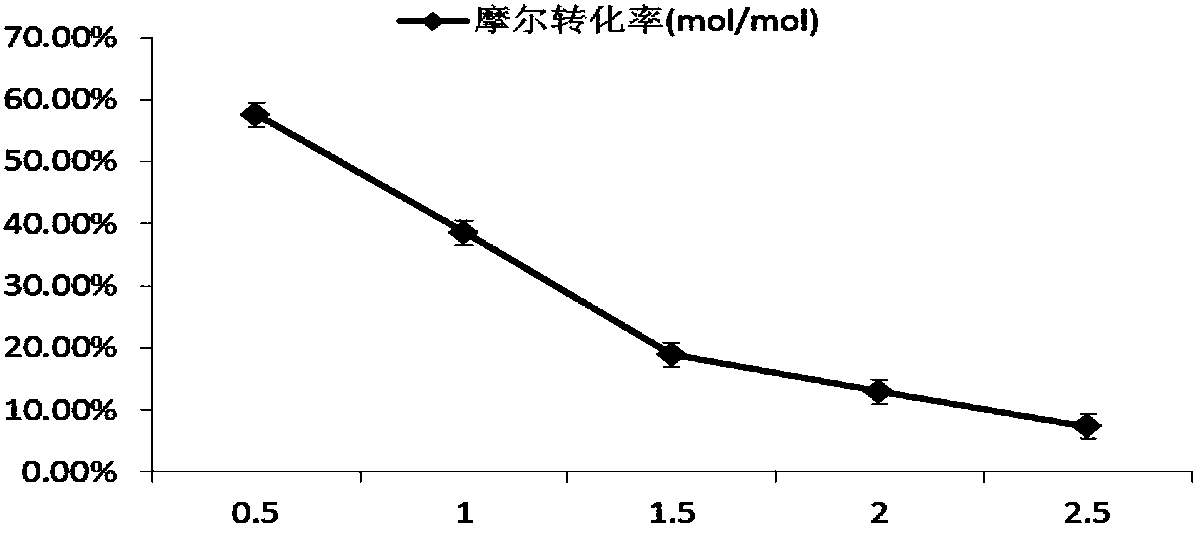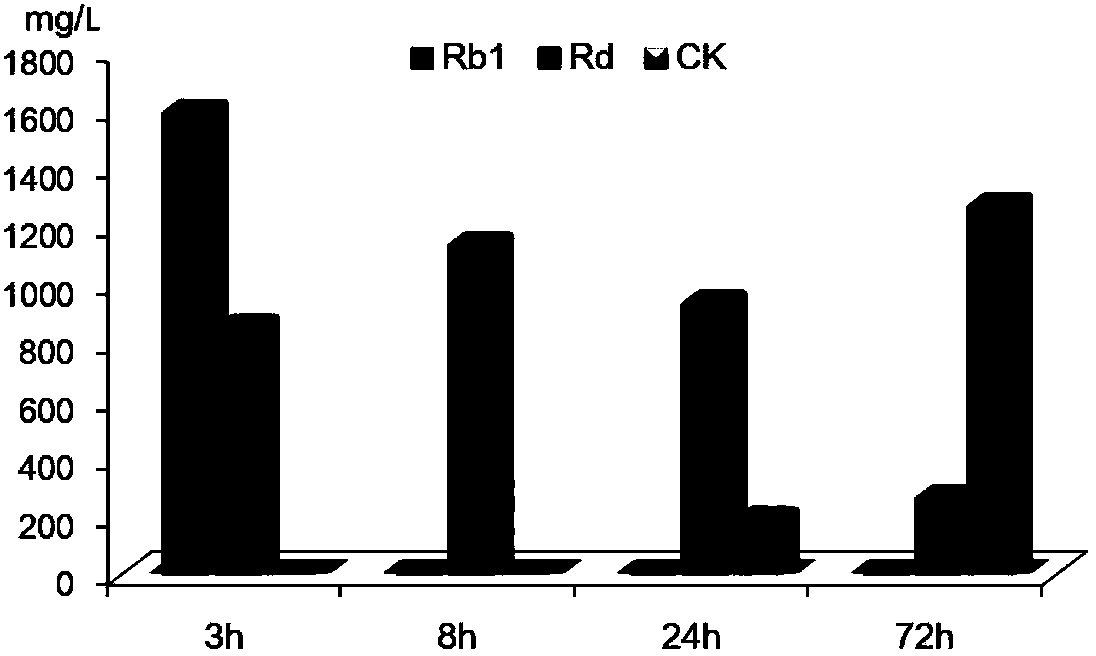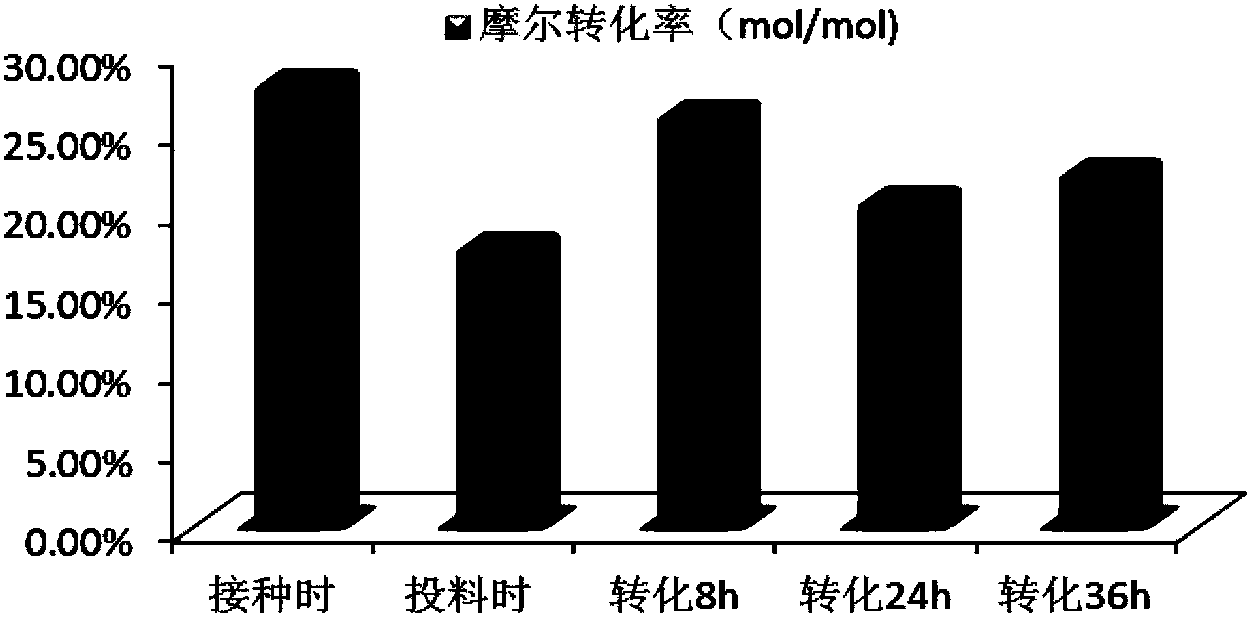Preparation method for increasing CK (Compound K) yield of ginsenoside
A ginsenoside and production technology, applied in the field of biomedicine, can solve the problems of unfavorable growth of microbial cells, long production cycle, low substrate concentration, etc., and achieve the effect of improving cell permeability, increasing substrate concentration and yield of transformants
- Summary
- Abstract
- Description
- Claims
- Application Information
AI Technical Summary
Problems solved by technology
Method used
Image
Examples
Embodiment 1
[0031] The mutagenesis of embodiment 1 parent strain
[0032] Strains: The ginsenoside-transforming bacteria is Paecilomyces Bainiersp.229, and the strains with good growth and high CK conversion rate are selected as parent strains.
[0033] Medium: Potato medium (20% potato, 2% glucose made into soup), divided into 10×150mm test tubes, 4ml per tube, added 30mg / ml (3%) notoginseng stem and leaf saponins and different concentrations of LiCl , 121°C, sterilized for 20min.
[0034] Mutation: The rejuvenated fresh slant was washed with 0.9% physiological saline to make 10 7 The spore suspension of 1 spore / ml is transferred to a flat plate with a diameter of 9 cm, and a paper clip is placed in the flat plate as a stirrer. Irradiate under ultraviolet light for 0, 2min, 4min, 6min and 8min respectively, take 0.1ml of the spore suspension after ultraviolet irradiation and add it to the above-mentioned sterilized medium, cultivate at 28°C, observe and record the growth of bacteria. ...
Embodiment 2
[0038] The determination of embodiment 2 substrate concentration
[0039] After the mutagenized strains were cultured on a shaking table at 28°C and 200r / min for 48 hours, substrates with a concentration of 0.5%, 1%, 1.5%, 2.0%, and 2.5% were added respectively, and the transformation was continued for 72 hours, and the concentration of CK in the bacteria was detected. content. The result is as figure 1 shown.
Embodiment 3
[0040] The selection of embodiment 3 surfactants
[0041] Since the continuous accumulation of the transformation end product in the microorganism will cause feedback inhibition and also cause certain toxicity to the bacteria, one of the solutions can be to improve the permeability of the cell membrane by adding an active agent to promote the transfer of the substrate into the cell and the transfer of the product to the cell. Extracellular transfer, thereby increasing productivity. Select Tween40, Tween80, Tween20, SDS, Span60 and Triton X-100 and other low toxicity surfactants to investigate the improvement of cell membrane permeability. Finally, the optimal surfactant Tween80 was selected.
PUM
 Login to View More
Login to View More Abstract
Description
Claims
Application Information
 Login to View More
Login to View More - R&D
- Intellectual Property
- Life Sciences
- Materials
- Tech Scout
- Unparalleled Data Quality
- Higher Quality Content
- 60% Fewer Hallucinations
Browse by: Latest US Patents, China's latest patents, Technical Efficacy Thesaurus, Application Domain, Technology Topic, Popular Technical Reports.
© 2025 PatSnap. All rights reserved.Legal|Privacy policy|Modern Slavery Act Transparency Statement|Sitemap|About US| Contact US: help@patsnap.com



